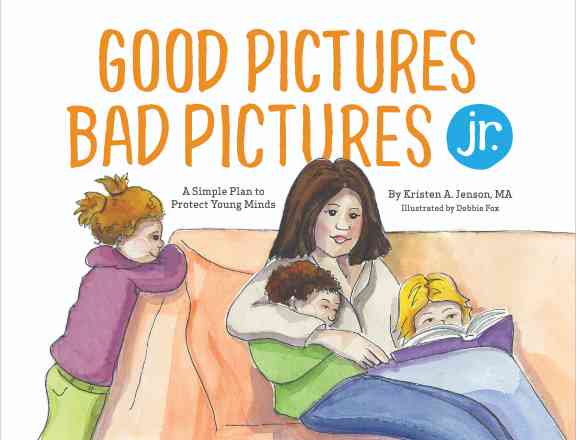
4 Misunderstood Signs of Child Abuse: A Sexual Assault Nurse Speaks Up
People naturally want to see evidence of damage done from an accident or a crime. Whether it’s the smashed front end of a car from a wreck, or a bruised eye after an argument, we want to see the wound, the stitches, the blood. We want proof.

We are socialized to believe that we have to see an injury to know it happened.
Herein lies the problem with proving sexual assault. About 95% of the time, there are no visible injuries. Proving sexual assault from physical evidence is incredibly difficult.
Parents, professionals and anyone working with children need to understand four common myths about evidence of child abuse. Being abused is traumatic, and sometimes adults can make the experience even more difficult when they doubt a child because they don’t see the signs that they expected.
1. Why we can’t expect physical evidence of abuse
It’s hard for people to grasp the concept that a child could be assaulted, but have no visible injuries.
Let me start off by saying, you’ve probably been taught incorrectly about female anatomy your whole life. Entire cultures have practices and beliefs strongly tied to the female hymen that are based on myths, fear, and control.
To set the record straight, females do have a hymen, but there is no membrane, skin covering, or “cherry” blocking the entrance of the vagina. Instead, a hymen is a stretchy, open ring of tissue that leads to the entrance of the vagina. The hymen is open from the day a female is born. It stretches a huge amount and can start healing within hours if injury does occur.
Since the hymen is already open, elastic, and already healing by the time an examiner sees a patient for sexual assault, there are typically no visible injuries. There is no bruising, bleeding, or a “torn hymen” to be assessed.
Another complicating factor is that most perpetrators do not sexually assault children in a way that will leave a visible injury. They don’t want to raise suspicion, and they want repeated access to that child. So most of the time they do not violently injure their victims.
A child having a “normal” genital exam doesn’t mean that he or she wasn’t sexually assaulted.
2. What about DNA?
If a child doesn’t have injuries, how else can we prove he or she was sexually assaulted? DNA.
Finding a perpetrator’s DNA on a child’s body or genitals can be hugely helpful in corroborating a disclosure of sexual assault.
However, this is very difficult with children because often a lot of time lapses before an exam. Disclosing abuse is a process. On average, most children do not speak up until 2 years after an assault. Most perpetrators groom their victims over time, and it can be difficult for children to have the understanding or language to name their abuse.
Most pediatric forensic programs won’t swab a patient for DNA if it’s more than 72 hours after the assault. It’s highly unlikely any DNA will still be on a patient’s body after that time frame. Studies with children show that typically 24 hours after an assault, the only DNA recovered is on clothing.
Imagine that a 3-year-old discloses abuse to her mom, but she’s too young to understand time frames. It’s a guessing game of when she was assaulted. By the time she arrives for evidence collection, it’s likely there isn’t any DNA left. Semen can stay in the cervix for much longer than 72 hours, but speculums are not used on pre-pubescent children, as they are extremely painful prior to puberty. For most children, DNA is inadvertently washed off, sweated off, or wiped off before they ever speak up about their abuse.
Because of this, unfortunately DNA is not always available as evidence.
[[CTA]]
3. Consistent reports are rare - why we need to believe a child's disclosure
What evidence should be accepted?
The most important consideration and best proof is a child’s disclosure of abuse.
That means we have to believe and act when a child says he or she has been assaulted. Too many people are quick to doubt a child’s disclosure, or will even call the child an outright liar.
The reality is that children do tell the truth about abuse. Research shows that only a tiny percentage of children lie about abuse, and at times it’s due to coercion from adults or caregivers. Most children under-report their abuse, and only tell a small portion of what happened.
Many kids try to gauge if their vulnerable information will be believed, or if they will be shamed into silence. Especially when the abuser was a family member or someone they know. Will their parents be willing to listen? The pressure to be silent is so deep, and when parents are upset or don’t believe the child, the child may change their story to protect themselves. Some studies show that over 90% of children who recant their abuse later say it was indeed true.
Sexual assault is traumatic. Because of that, memories are stored differently inside the brain. This means timelines, disclosures, and stories may not always add up. That doesn’t discount a disclosure. Rather, it proves the event was indeed traumatic to the brain.
The vast majority of children are sexually assaulted by someone they know and trust. This makes disclosure even more difficult.
Our first and best response to a child reporting that they have been abused is to believe them and get help.
Related: Sexual Assault Expert Warns of Heartbreaking Trend Among Children
4. Fight, flight or freeze - all are normal defense mechanisms
Regarding trauma, when the brain senses that it is in danger, it releases a cascade of chemicals. We have a “fight” or “flight” response--or another less known response to trauma--”freeze.” During a sexual assault, most victims freeze.
It’s not a choice, it’s a reaction.
You have to shut down to survive that moment. It can leave a survivor with little to no physical injuries. There may not be any scratch marks, bruises, or visible genital injuries.
There probably won’t be a report of trying to flee, or screaming “no” during the attack. This notion is a glamorized Hollywood version of assault that doesn’t exist for most victims.
You can watch Heidi Olson’s presentation at the Child-on-Child Harmful Sexual Behavior Symposium here:

Understanding myths can help kids in crisis
Look at what most of us think is needed for a burden of proof:
- DNA
- Visible injuries
- Repeatedly telling a story the same way over and over
- Aggressively trying to defend themselves
It’s nearly impossible to produce those things with a child who has experienced sexual assault.
Most young victims cannot repeatedly tell their story linearly. They were too afraid and unprepared to fight back. They do not have injuries, and the DNA from a perpetrator is gone.
Unfortunately, because of this, many cases are found to be “unsubstantiated.” That is, there isn’t enough proof to move forward in a criminal investigation. When we read stories in the media of “unsubstantiated” claims, meaning, no visible injuries seen from a SANE (Sexual Assualt Nurse Examiner) exam or lack of DNA found in a rape kit, it DOES NOT mean a sexual assault didn’t occur.
Sexual assault is rampant. It occurs with devastating frequency, and is prevalent in all demographics and areas of society. When a child discloses that they have been assaulted, it’s imperative to believe them.
They need you!
Related: The 3 Big Red Flags of Sexual Abuse
What to do if a child reports abuse to you
There are some key messages that are important for children and young people to hear in their parents’ words and actions:
- I believe you.
- I don’t blame you in any way; I blame the abuser.
- The abuse says nothing about you or who you are. I don't see you any differently (apart from recognizing your strengths in surviving it).
- I trust your sense of who might be the best person to talk to (e.g. me, your other parent, other family, friends, a therapist or counselor).
- If there is someone else you’d like to talk to, I can help to organise this.
- You can always talk to me at any point. Different feelings can come up further down the line.
- There is a way forward from any difficulties and intense emotions.
From Think U Know
If you suspect abuse, RAINN has steps for how to talk to the child and report abuse when needed.
Protect them. Empower them. Help them heal. Even if a sexual assault case never makes it to court or a perpetrator denies all responsibility, a child’s disclosure should be treated with the utmost respect.
You can be a source of support and comfort that can make a huge difference in a child’s life.



Good Pictures Bad Pictures Jr.
“I highly recommend this book to all people with children. A must have for all parents!” —Amazon Review






.png)
